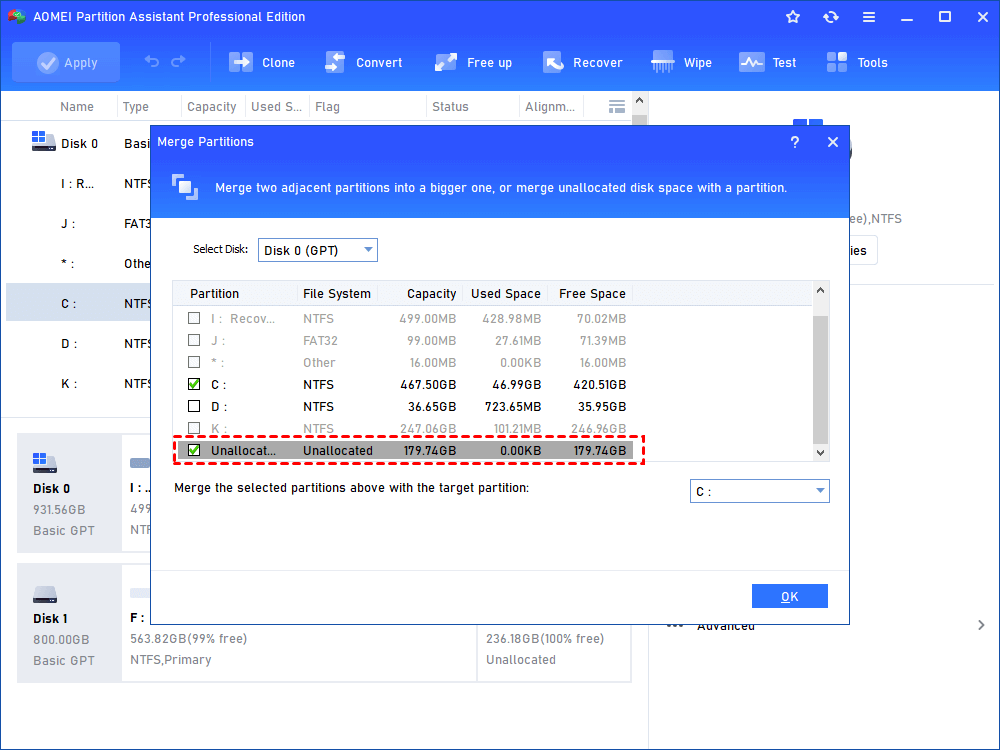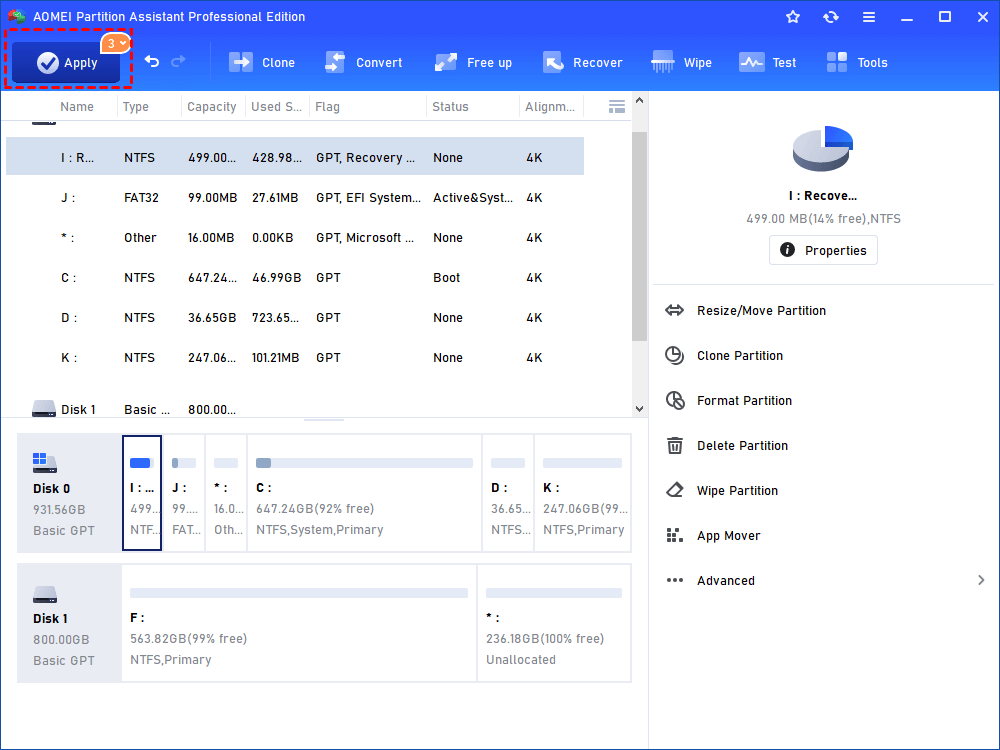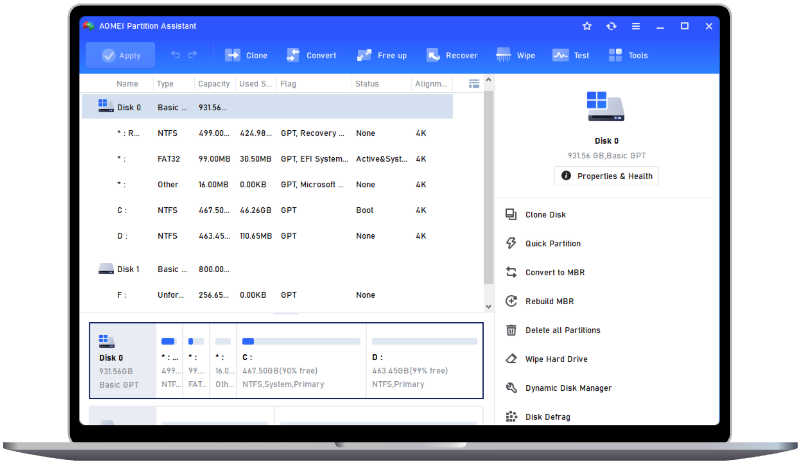Why Unallocated Partition Cannot Extend and How to Fix It?
Unallocated partition cannot extend in Windows 11/10? You come to the right place. This post explains the possible reasons for it and offers three feasible ways to help you extend partition with unallocated space successfully.
Why unallocated partition cannot extend?
“I am trying to merge 93.15 GB of unallocated disk space to my main Windows drive, but the option to extend the volume is greyed out. I do not want to format both partitions as I have data on my main drive. How can I combine this unallocated disk space?”
When you try to extend a partition using an unallocated space, it might not work due to several reasons. Here are some common causes:
✉ Non-adjacent space: The unallocated space must be directly adjacent to the partition you want to extend. If there’s another partition in between, you won’t be able to use the unallocated space.
✉ Partition type limitations: Certain partition types, such as primary partitions, may have restrictions on how they can be extended, especially if the unallocated space is not in a compatible format or location.
✉ Disk structure constraints: Some disk structures, such as those using a Master Boot Record (MBR) instead of GUID Partition Table (GPT), may limit the amount of available unallocated space that can be used for extension.
✉ File system compatibility: The file system of the partition you want to extend might not support dynamic resizing or extending into unallocated space, particularly with older or less flexible file systems.
✉ Disk fragmentation: The disk could be fragmented in such a way that unallocated space isn't properly positioned or contiguous with the partition, preventing its use for expansion.
How to fix unallocated partition cannot extend in Windows 11/10
When managing partitions in Windows 11/10, you might encounter the issue of being unable to extend a partition with unallocated space. Below are some proven fixes to resolve this problem.
Fix 1. Delete the adjacent partition (if possible)
If you have an adjacent partition that sits between the primary partition and the unallocated space, it can prevent you from extending the partition. Deleting the adjacent partition in Disk Management will free up the necessary space to extend the primary partition.
Step 1. Open Disk Management (Press Win + X and select "Disk Management").
Step 2. Identify the partition between your desired partition and unallocated space.
Step 3. Right-click on the partition and choose Delete Volume (this will erase all data on that partition).
Now, right-click the partition you want to extend and choose Extend Volume.
Fix 2. Convert the file system format to NTFS and extend the volume again
Windows has limitations that prevent partitions from being extended outside the NTFS format. To overcome this, you can convert the FAT, exFAT, or EXT partition to NTFS using Disk Management before extending it. Here's how to proceed:
Step 1. Right-click the Windows icon and select Disk Management from the menu.
Step 2. Locate the target partition, right-click on it, and choose Format.
Step 3. In the pop-up window, specify the volume label and select NTFS file system. The “Allocation unit size” can be changed. Then click “OK”. By default, it will perform a quick format.
Step 4. Right-click the same partition again to check if the Extend Volume option is now available. If it’s enabled, proceed to the next steps.
Step 5. Click Next and specify the amount of unallocated space you want to add to the partition. Then, click Next to continue.
Step 6. Click Finish to complete the partition extension process.
Fix 3. Use best partition manager to extend partition with unallocated
Encountering unallocated space on your hard drive that cannot be used to extend an existing partition is a common issue. Windows' built-in Disk Management tool has limitations, such as restrictions on extending a partition unless the unallocated space is adjacent and on the right side of the target partition. If you're facing such challenges, the best solution is to use a professional partition manager like AOMEI Partition Assistant.
This powerful tool comes with a feature called “1-Click Adjust Space” which allows you to extend or shrink a partition space by simply dragging the dots next to the partitions' head and tail, which means you can resize multiple partitions at the same time. It easily breaks the limitation of extending partitions with adjacent unallocated space. Let’s see how to make it using AOMEI Partition Assistant:
Step 1. Install and launch AOMEI Partition Assistant. Right-click a partition (here is D: partition) you want to adjust space and select "1-Click Adjust Space".
Step 2. If you want to use the space on F: to expand D:, you can simply drag the dot near the partition F: head backward to shrink the partition F: and enlarge the partition D: at the same time. Then click "OK".
Tips: You can simultaneously drag the dot near the partition C: tail forward to shrink the partition C: so the D: will also be enlarged with the space of C: at the same time. In this case, you can adjust all partition space (C:, D:, and F:) on the disk.
Step 3. You can preview the operation by viewing the "Pending Operations". To commit the "Pending Operations", please click "Apply" and "Proceed".
Step 4. The process will start and you can check the progress. It might take time to finish the operation.
Step 5. Wait for the operation to be finished. After it is completed successfully, you will find D: is enlarged and both D: and F: are adjusted.
In addition, you can also use the “Merge Partition” of AOMEI Partition Assistant to combine the to-be-extended partition with non-continuous unallocated space directly.
Step1. Open AOMEI Partition Assistant again. Right-click the drive you want to extend (here is C drive) at the main interface, then select "Advanced" > "Merge Partitions" at the pop-out menu.
Step2. Then, it will move to the window where you can assign unallocated space to C drive by selecting the partitions in the box. Click "OK".
Step3. Here you can see that you have already extended the C partition by adding the unallocated space to the C drive. Don’t forget to click "Apply" to submit the whole operation.
Conclusion
If you’re unable to extend a partition due to unallocated space, it’s likely caused by issues like non-adjacent space, incompatible file systems, or disk structure limitations. While basic fixes like deleting adjacent partitions or converting file systems to NTFS can work, using a professional tool like AOMEI Partition Assistant offers a more comprehensive solution. It also provides many other advanced features to help manage disks and partitions such as cloning hard drive to another, converting MBR to GPT, moving files from C drive to D drive, etc.





